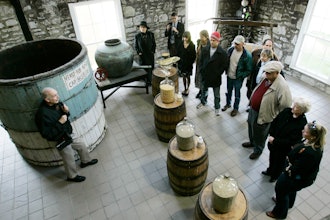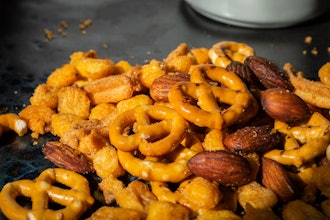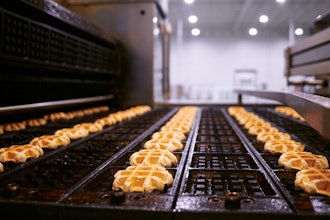(THE CONVERSATION) “Take the stairs!” we’ve all been implored, to help maintain our health. But what if taking the stairs is painful, difficult or, worse, potentially dangerous?
In most public buildings, we can opt for an elevator or escalator ride. But at home (unless you live solely on the ground floor), taking the stairs is usually a necessity, not a choice. And as people lose mobility with age, injury or disease, it becomes more challenging. Stair negotiation is one of the top five most difficult physical tasks for older adults; in one study almost half of nondisabled older adults reported trouble climbing up stairs, and more than a quarter reported problems going down stairs.
My research collaborator, Karen Liu, a computer scientist at Georgia Tech, noticed that her 72-year-old mother is still very active and can walk for miles – but complained about climbing stairs. Karen wondered whether we could engineer a little boost into her step while climbing stairs.
Springy steps store and release energy
Karen was inspired by an innovative lightweight ankle exoskeleton, designed by Steve Collins at Carnegie Mellon. The exoskeleton is worn like a brace on the ankle and reduces the energy required of the wearer during walking. On each step, the exoskeleton stores and then returns energy to the user through a clever use of a spring and a mechanical clutch.
On each step during walking, we use energy in our muscles to first brake our bodies and then propel ourselves forward. The ankle brace helps with both of these jobs. It assists with braking by stretching a spring, and then with push-off by releasing the spring, relieving the work done by muscles for both tasks.
But Karen knows that her mother, like most people, would not wear an ankle brace or special shoes just to help her get up the stairs. Could the stairs themselves be modified?
A key insight came when she talked to our colleague Young-Hui Chang at Georgia Tech. He pointed out that unlike level walking, climbing the stairs requires almost pure propulsion and no braking by our muscles, so no energy can actually be stored. Undaunted, Karen realized that even if energy can’t be stored when going up the stairs, it could be stored when descending, where our muscles are almost exclusively braking to slow our bodies against the pull of gravity.
That’s when she approached me with the idea of making stairs that themselves store energy as someone descends, and releases it back to the user on the way up. I thought the idea was crazy, but agreed to let Yun Seong Song, a talented mechanical engineer at Missouri University of Science and Technology who was a postdoctoral researcher in my lab at the time, work on the idea. Since Yun Seong has a lot of expertise building robots – particularly exoskeletons – we though he might be the perfect person to build and test Karen’s energy-recycling stairs.
Easing the way up and down
The results are a prototype of Energy-Recycling Assistive Stairs (ERAS) that make it easier not only to climb but also to descend the stairs, the latter of which we didn’t expect.
Similar to the energy-recycling ankle exoskeleton, springs are stretched when a person goes down the stairs, which has the added benefit of cushioning stair descent. In fact, one test subject said it felt like walking on pillows. We measured a 27 percent reduction in ankle braking torque of the trailing leg, which lowers the body going down the stairs. Going up the stairs, the tensioned springs are released with a timing that helps to push the trailing leg up when lifting the body, reducing the propulsive torque required by the knee of the leading leg by 37 percent.
While we tried out our prototype only on healthy young adults, with further development and testing, it could potentially benefit users with limited mobility. We suspect our energy-recycling assistive stairs could ease the knee joint pain that’s often a reason for not taking the stairs. ERAS might also help mitigate falls – a major hazard when going down the stairs because braking against gravity is challenging for many. Perhaps the greatest benefit of ERAS could be making stair descent easier and safer for those with limited muscle strength.
A cheap, efficient home option
And since the energy-recycling steps are modular and compact, they can be added to existing stairs without the expensive remodeling required to install an elevator or escalator. Because there are no motors, the energy-recycling assistive stairs also consume little power. In contrast to passively riding an elevator, our prototype requires users to actively participate in stair-climbing, which could help them retain their mobility.
Energy-recycling assistive stairs thus open the possibility for people to stay more active and live independently in their homes even as they lose mobility due to injury, aging or degenerative diseases of the musculoskeletal and nervous systems.
This article was originally published on The Conversation. Read the original article here: https://theconversation.com/energy-recycling-stairs-could-add-a-spring-to-your-step-80720.






















